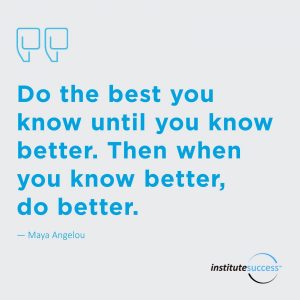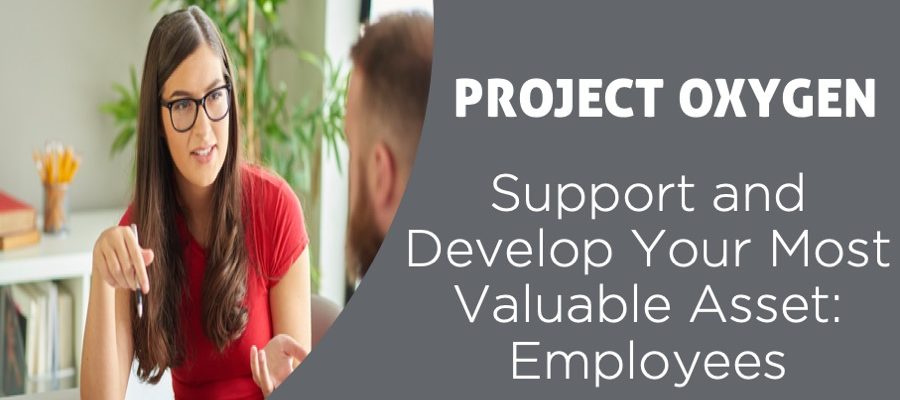
Companies often say that their most valuable asset is their staff, but do they really live this mantra? Google’s Project Oxygen found that employees rated managers more highly who helped them grow skills and nurture career goals. (Number 6 on the list of 10 Oxygen behaviors of Google’s best managers).
Companies have to be the best they can be internally before they can be the best for their clients. Good is no longer good enough. We must strive to be exceptional.
By really taking the time to develop relationships with employees and create a shared vision for success, managers can not only retain top talent, but can turn an underperformer into one of their best workers.
Researchers at Gallup were surprised when they reviewed data from 550 organizations and found that only about half of employees indicated a strong understanding of what was expected of them at work.
Don’t let that happen at your company. At Institute Success, we help leaders and business owners invest in their employees’ career development and discuss performance in a variety of ways. Here is a taste of what we recommend:
1) Focus not just on skills and knowledge, but habits and attitudes. A performance-coaching tool known as the K.A.S.H. box illustrates that employers must not look just for a prospective hire’s raw ability to do the job, but also at the mindset and habits they apply to it. There is a saying in business that we hire for aptitude and fire for attitude. Employees may know how to do something, but they may not know it in the way we want.
This is a people issue, not a technical one. Don’t make assumptions about your employees. Take the time to train them how to develop not just the skills but the habits and attitudes that you need to see in order for the job to be done right.
2) Make time for assessments, and then reassess continually. If a job could talk, what would it say? A recent study from an industrial and organizational psychologist working at RAND Corp. found that the average person will spend about 90,000 hours at work over a lifetime. If you are an executive, that number is likely even higher. That’s a lot of coffee!
So we as leaders want to make sure we are hiring people with the right aptitude for the work. Hire the person who fits what the job could look like as you envision it, not just the person who fits the job in its current form. We encourage employers to use assessments up front to see strengths and blind spots when considering someone for an open position or new role within the company. And then to be very clear about what success in that particular job would look like. The job candidate does not have to be perfect, but ideally would show a predominance of connection to the skills and attitudes needed to shine in that position. Along the way, employers must regularly check in and reassess not just how the employee is performing, but re-evaluate the definition of progress in that role.
3) Create a shared vision for success and nurture connection to work. Did you know that some of your employees may have “quit” long ago, but continued to show up? A comprehensive report from Gallup on the state of the global workplace found that a startling 67% of employees are not engaged with their work. They may be giving you their time, but not their best effort or best ideas.
Why is this? We’ve found that one reason is the way employees are being spoken to, or not spoken to, by their bosses. Positive communication is essential to employee engagement, and therefore the success of your business as a whole. The new workforce is composed of people seeking purpose and meaning from their career, along with opportunities to develop and a manager that acts more like a coach than a boss.
So if we say that employees are our most important assets, we need to ensure they have what they need and that we are playing to their strengths.
There is no “I” in team; our responsibility as leaders is to create a shared vision of success with our employees based on what competencies our clients need. And let’s talk to our employees about what kind of professional development would be in their interest. Show them that you are invested in their success and want them to grow.
When you know better, do better.
Pro Tip: We ask our team four questions every day to keep our success on track. Sign up for one of our coaching sessions and we’ll share them with you. Talk with a Coach
